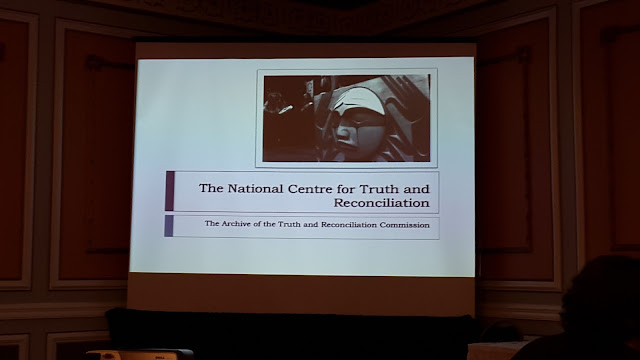Hi everyone, this is the museum's archivist, Vino, continuing with my blogs on the sessions I attended at the 2015 ACA conference in Regina.
 |
| Ry Moran, director of the NCTR |
One of highlights from the conference was a
session with
staff of the National Centre for Truth and Reconciliation
(NCTR).
The NCTR, located at the University of Manitoba, has a
mandate of
archiving as complete an historical record as possible of the Indian
Residential School (IRS) system and legacy.
The NCTR will be the permanent home for all statements, documents, and other materials gathered by the Truth and Reconciliation of Canada (TRC).
They are on their way to digitizing close to 4 million records and are concerned with making sure there is access to records while, at the same time, respecting the privacy of individuals. We were shown a preview of the website that they are about to launch that will host most of the digitized records. It really will leave a lasting legacy for those looking into the history of the IRS in Canada.
This was definitely one of the sessions I was looking forward to attending. As the archivist at the Musée Héritage Museum I respond to research requests, relating to many of the Aboriginal families from St. Albert, and felt it was important to know more about the development and future plans of the NCTR as it evolves as a centre for housing this important information for Canada.
 |
| Preview of NCTR website that will host digitized records. Set to launch Fall 2015, nctr.minisisinc.com. |
St. Albert was home to two residential schools in the region, the Youville Convent on Mission Hill and the Edmonton Industrial School located near River Lot 56.
I am sure that once the NCTR website is up and running, it will be a valuable source for researching the IRS system in St. Albert and across the country.
If you get the chance I would also recommend visiting the National Centre for Truth and Reconciliation archives at the University of Manitoba. The staff at the NCTR are working hard to ensure that the building is a welcoming place for all people, especially Aboriginal People.
I will be back with another blog on my experience at the ACA conference soon... Vino





















